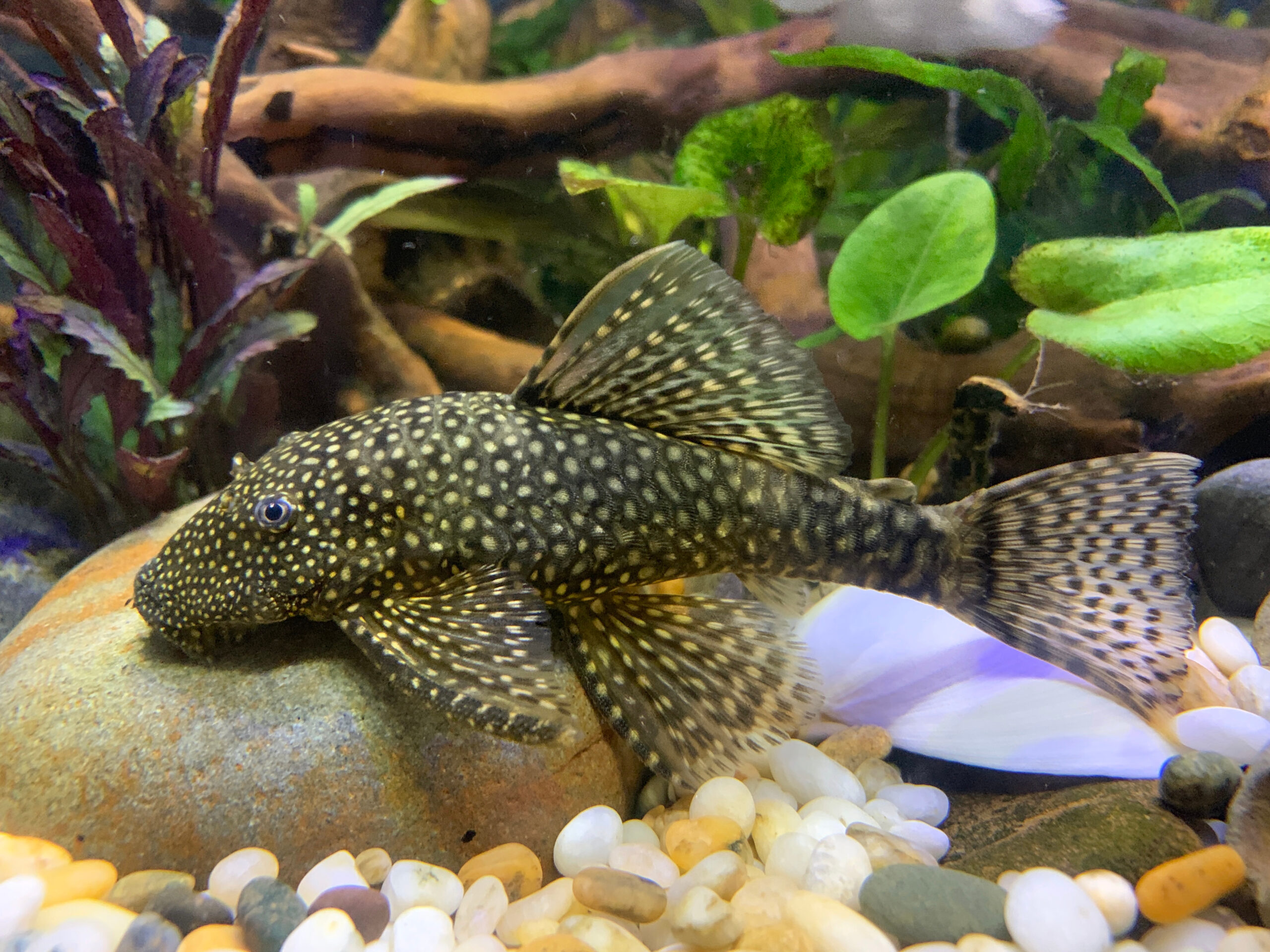Common Bristlenose Catfish (Ancistrus sp.)
The common bristlenose catfish (Ancistrus sp.) is a popular aquarium fish sold in pet stores under the names “bushynose catfish” or “bristlenose pleco”. It is a representative of the genus Ancistrus. Since representatives of different Ancistrus species can interbreed with each other, it is highly likely that over the years of breeding in aquariums the fish have taken advantage of this opportunity. As a result of these interspecies crosses, the now popular “algae eater” was born, whose veins might contain blood of Ancistrus cirrhosus, Ancistrus multispinis and many other species. Of course, the unclear origin of this fish does not make it less attractive, and maybe even adds its a touch of mystery. However, it is worth noticing that calling this hybrid by the name of a bushymouth catfish is a bit misleading. The bushymouth catfish or Ancistrus dolichopterus (L-183) is a completely different fish.
How does a common bristlenose catfish look like?
Due to their body shape, Loricariidae fish cannot be mistaken for any other fish. The first thing that strikes the eye is their dorsoventrally flattened body and the lower placement of the mouth. The mouth opening is very characteristic of this group of fish. It looks like a suction cup. It is always open, surrounded by more or less muscular lips that have been transformed to allow the fish to suck on various surfaces. This ability is extremely important for species that live in swift waters.
The common bristlenose catfish grows up to 12-15 cm, but due to a mixture of genes from unknown ancestors it is often larger. The same is true of its body coloration, which can range from light brown to almost black with numerous lighter spots. As males grow and mature, they develop tentacles, which are outgrowths on the fish’s snout that are characteristic of the genus Ancistrus. Smaller tentacles may also appear in females. In addition to the fish in its natural “wild” coloration, an albino variety has also been bred. Both variants can have both short and long fins.
Breeding forms of Anicstrus not derived from the common bristlenose catfish are also known, such as calico, snow white, red, lemon (which can have both short and long fins) and the long-finned olive-green variety known as “green dragon”. All of these varieties can also come in the albino version.
How to arrange aquarium for common bristlenose catfish?
The common bristlenose catfish is generally an indispensable inhabitant of all general tanks. It is a hardy and very adaptable fish. To make it feel comfortable in the aquarium you should ensure hiding places among the roots. It is also a good idea to put tubes of clay, hollow wood or at least coconut shells or clay pots in the aquarium. The holes in these pieces should be large enough to prevent fish from getting stuck in them. Both fine gravel and sand will work well as a substrate. The latter is especially preferred. In addition to roots, you can also put oak leaves, ketapang and alder cones into the aquarium, which will be a source of tannins and humic acids.
Water parameters suitable for a common bristlenose catfish
Loricariidae fish are known for their liking for flowing water, which is something to keep in mind when arranging the tank. The water must be clean, changed frequently, and the filter, preferably with an air diffuser, should provide clear water movement. This fish will feel good in water with temperature 22 – 27oC, hardness in range 5-20odGH and pH of 6,5-7,5.
What does a common bristlenose catfish eat?
Ancistrus fish are herbivorous. Therefore, their diet should be based mainly on plant foods. In the aquarium you can feed it with granulated foods or tablets such as Hi-Algae Discs, Super Spirulina Forte Tablets, 3-Algae Tablets, Green Algae Wafers, Pleco’s Tablets. An interesting food would be Gel Formula for Herbivorous Fish. You can prepare this food yourself by creating a feeding area for the fish on a rock or larger or smaller sinking pieces of jelly.










